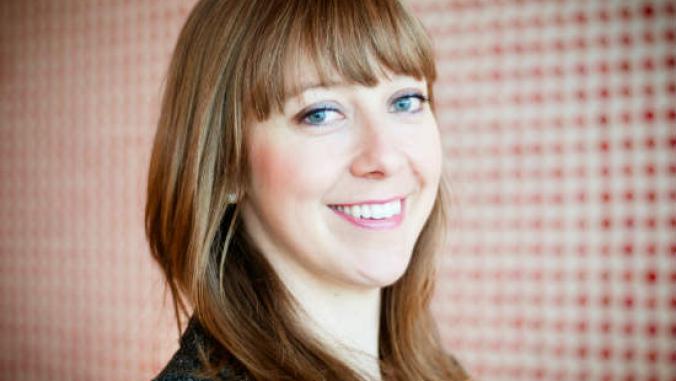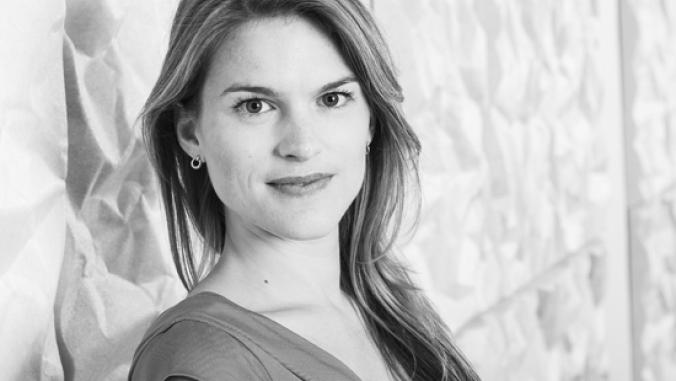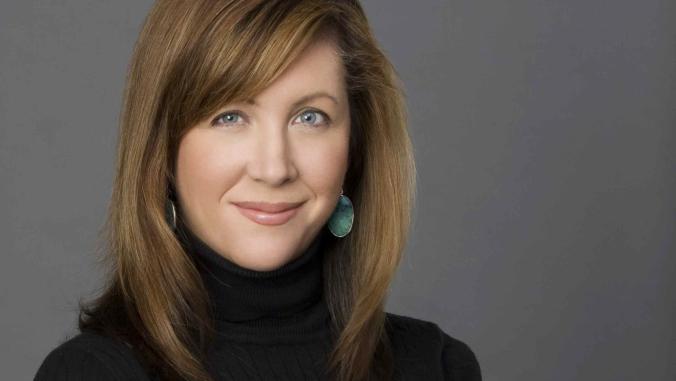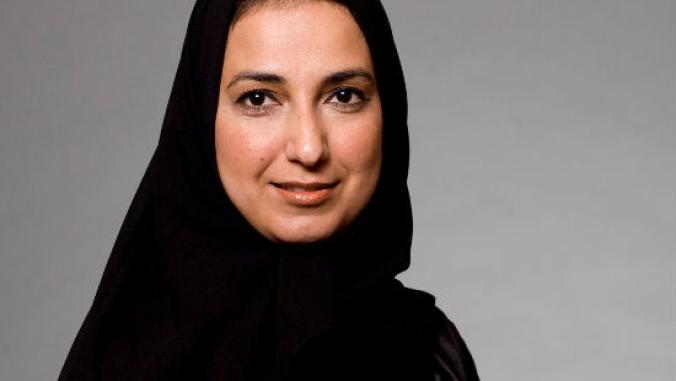How She Leads: Julian Potter, San Francisco International Airport
<p>Meet the chief of staff who helped make San Francisco International Airport a leader in sustainability.</p>

How She Leads is a regular feature on GreenBiz spotlighting the career paths of women who have moved into influential roles in sustainable business. In this edition, Maya Albanese interviews Julian Potter, chief of staff at San Francisco International Airport (SFO).
Julian oversees the airport sustainability policy as well as government affairs. She has spent 20 years in policy and executive positions in government agencies in the United States.
San Francisco International Airport has integrated sustainability across all divisions of its operations, including design and construction standards, operating and maintenance requirements, concession and lease requirements, ground transportation and employee programs. SFO has set targets to achieve zero waste in its operations by 2020 and a 40 percent reduction in its greenhouse gas emissions. SFO has received numerous awards for its sustainable food sourcing initiatives and is a clear leader in North America for local and organic airport food and beverage concessions.
In this interview, Maya asks Julian to elaborate on how she has facilitated SFO’s impressive achievements thus far, and what goals the airport aspires to achieve in the next decade.
Maya Albanese: How did you move into your current role at SFO?
Julian Potter: I have been with the organization for six years and in my current role as chief of staff for four years. I moved into my current role after we saw that sustainability was an emerging trend and we needed a position to cover sustainability policy across the entire organization. I have always worked on policy, and previously acted as deputy chief of staff to Mayor Gavin Newsom. I also have a master’s degree in public policy from the New School for Social Research in New York. My current work is consistent with my skills and background; sustainability is just a new form of policy.
MA: What are your top responsibilities?
JP: I oversee the airport sustainability policy and ensure that the airport creates programs and policies that will help us meet mandated targets, such as in case of greenhouse gas (GHG) emissions reduction. By city law, we are required to reduce our GHG emissions to 25 percent below 1990 levels by 2017. By 2025, we have to be operating at 40 percent below 1990 levels. Our program for meeting the GHG emission targets is coming along great so far. Despite the fact that we added a whole new terminal with 14 gates to our footprint, we have still reduced our GHG emissions 34 percent below the 1990 benchmark, and our solid waste recycling rate is almost at 80 percent now.
MA: What other sustainability issues do you work on?
JP: We prepare an annual climate action plan (CAP), which quantifies our GHG emissions and documents all of our efforts and tracks our energy usage, fuel consumption, water use, waste generation, etc. The CAP also defines our planned actions for meeting the next milestone in GHG emission reduction. Our environmental sustainability report also examines all of the major operations at the airport with the objective of minimizing the environmental impact of these operations.
MA: What environmental and social issues do you feel passionate about?
JP: I feel passionate about transportation -- personal cars, commuting and mass transit. We really need to advance new ways of moving employees in and out of their offices. By building the AirTrain, which goes to all the terminals and garages, we took hundreds of buses off the road and eliminated a significant amount of GHG emissions. Now, we’re incentivizing public transit more for our staff. The BART train comes right into the airport, but it is expensive at $16.50 per round trip ticket. Half of that price is a surcharge to enter the airport, so SFO has negotiated with the city to pay that surcharge for its employees. Another example is the bikes we have provided to employees to travel in between buildings at the airport. Rather than travel between meetings by car or bus, we’ve facilitated bike transit by repainting the road lanes to include bike paths, and providing the bikes, helmets, vests, training classes and a GPS that tracks the miles they ride. We’re putting together competitions for who can ride the most miles in a month, so we’re incentivizing exercise, too.
MA: Was there an “aha moment” that led you to want to work in sustainability?
JP: The aha moment for me was realizing that this is just good for business across the board. It’s always more affordable to reuse, recycle and plug in. For example, for our runway reconstruction project, a firm won the contract to build it because their cost was the lowest. Their cost was low because they bought the rights to a hospital that was being torn down a mile away and are using that waste material to create the new concrete bed for our runway. It’s more economical to use waste rather than procure raw materials. Then you’re also preventing waste from entering landfill, so it’s a win-win all around.
MA: What types of sustainability concerns are particular to an airport?
JP: The planning, design and construction of all of our terminals is one area where we can make a big impact. With the size of our spaces and the number of people passing through the terminals here each day, we require a lot of heating and cooling to keep everyone comfortable. The same goes for wastewater management. So, we’re working on the operation and maintenance of automated, sustainable air conditioning systems that can do this without wasteful energy use. Noise pollution is another environmental concern. We need to mitigate aircraft noise for our local schools, hospitals and communities.
In fact, you could look at airport sustainability in three scopes:
Scope 1 -- Where can we have a direct impact? This data is in the Climate Action Plan.
Scope 2 -- Who else is within our sphere of influence? We are working with the airlines on piloting flights with biofuels and have tested towing vehicles to get planes on the runway instead of using their engines. We’ve offered the option for planes to turn off their power at the gate and plug into the airport system instead. Pre-conditioned air can also be provided to the plane from the airport now.
Scope 3 -- What is the impact of the passengers? We are providing incentives for air travelers to use eco-friendly ground service transportation, like providing vouchers for rentals of hybrid cars and giving hybrid taxis head-of-the-line privileges at the airport.
MA: Do you think that air travelers notice or care about these issues?
JP: Well, the new Terminal 2 has consistently gotten the highest rating of any SFO terminal and of terminals in the entire country, and we have the highest spend rate per passenger there. Based on revenue generation, this is a success that shows that people want these options. We are providing local, sustainable food options that people are willing to pay for. In many airports, you follow the signs for food and there’s just a vending machine there.
MA: Please tell us a bit about Terminal 2 and why it is so groundbreaking.
JP: We wanted to do a 100 percent green terminal. In our request for proposal (RFP), we told the food concessionaires that they had to have sustainable/local food and that all to-go containers must be compostable. These policies are now becoming standard in all of our RFPs. For example, it’s required to put in hydration stations, so people can fill their reusable water bottles.
MA: SFO has won numerous awards, including the “Healthiest Place to Work in the Bay Area.” Why is it so wonderful to work at SFO?
JP: Well, we have free yoga and Zumba every day. We are building a gym and already have yoga rooms. We pay for Weight Watchers for our employees, host exercise challenges and organize walks outside where we track our miles. We offer free physicals, medicals tests and discounted daycare. Now, we’re organizing a farmers market in partnership with San Mateo County that will be available to employees and passengers.
MA: Does SFO have any programs that support women specifically?
JP: This is an interesting question that inspires me to look more into the potential opportunities for women’s programs here. The truth is that there are not a lot of women in the aviation industry. This is partly because it grew out of the military complex, and many airports are run by former military personnel. There is also a heavy emphasis on technology and engineering, which are known to be male-dominated. You do see more and more women leading airports successfully, though. To name a few, there are great women leading in LA, Denver, Reno, Chicago and New York.
MA: Does the fact that SFO is owned by the city of San Francisco make it more progressive?
JP: The greenhouse gas reductions law passed in SF is more ambitious than any GHG law in the country. This is a product of great leadership from former Mayor Gavin Newsom, and all the way to former Gov. Schwarzenegger’s office. People may not actually know that all of the airlines became deregulated in 1978. Since then, most airports are city-run, like the other city planning departments. Some airports have tried to privatize, but most remain city/county owned and operated. Essentially, we are nonprofits though. We balance our budgets at the end of year, and any money we generate is put right back into efforts to develop and improve the airport the following year.
MA: Where would you like to see SFO in 2020?
JP: In 2020, SFO should be zero waste and GHG neutral, and we’re almost there already. We will be 40 percent below 1990 GHG Levels, which is a very aggressive target. We also mitigate over 200 percent of our GHG emissions by enabling airlines and rental car agencies to reduce their own GHG emissions. The state Air Resources Board recently declared the city Public Utilities Commission as a zero-carbon electricity provider because over 90 percent of our electricity is generated by hydropower and the balance is derived from green energy.
MA: What advice would you give other professionals interested in making a positive impact in their organizations?
JP: There are a few ways to make an impact in this field. One way is to create a sustainability office and to hire into it. The other method, which I would advocate is the better path, is appointing an organization-wide role to oversee it, and then pulling in people from each facet of the organization who can bring expertise from their respective functions to the table.
MA: What is one thing you’re particularly proud of accomplishing in your role?
JP: Creating an organization-wide team that pulls from each of the divisions to look at sustainability and all of its assets, and commit to being a leader in it.
MA: What is a continuing challenge you face in your work?
JP: It’s always challenging to keep up with this industry, which is always changing. We need to make sure that SFO is well-positioned. For example, people may think that the California high-speed rail is our competition, when in fact we need the rail to alleviate some of our passenger load. At SFO, 15 percent of our traffic goes to LA. If we can pass 5 percent of that to the new rail, then we could make big improvements. We are challenged to constantly optimize efficiency of the airport while increasing capacity and creating higher quality service for our passengers.
MA: What is an obstacle you have successfully overcome?
JP: There has been a steep learning curve since the start, because this industry is so laden with technical terminology. So, I went to “ground school” and got myself up in the air taking flying courses. Although we run the land side of airport operations, we have to interact with runway crews, control towers, etc., and this requires some sophistication and understanding of aviation technology and terminology. After six years working here, realize that you just have to be passionate, dedicated to the cause, and continuously hungry for new information.





